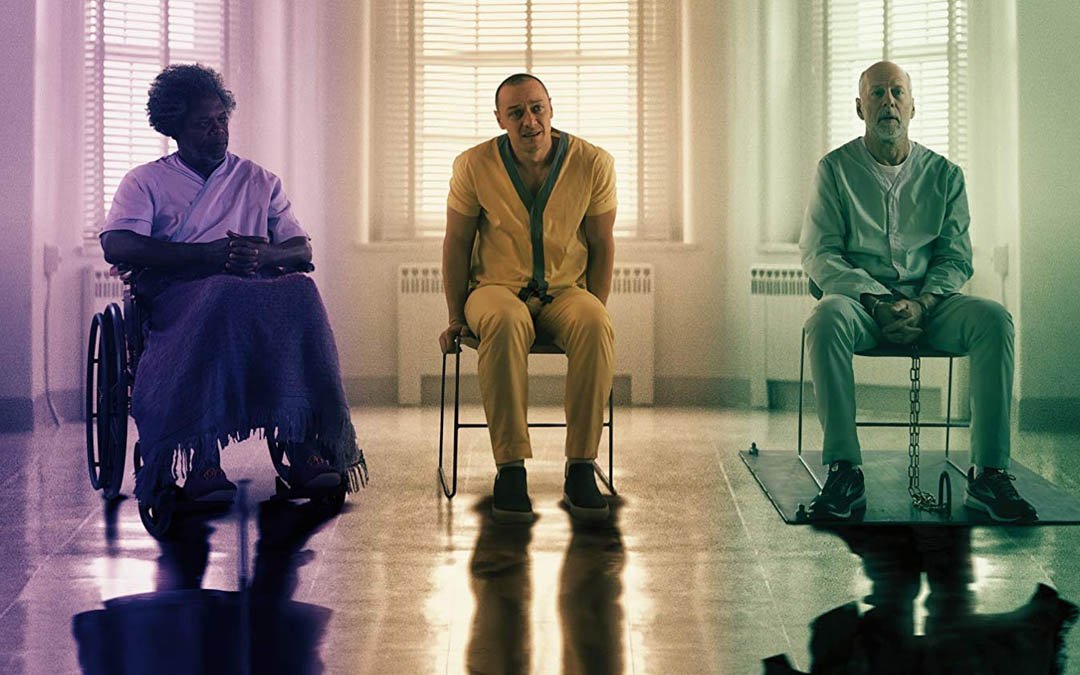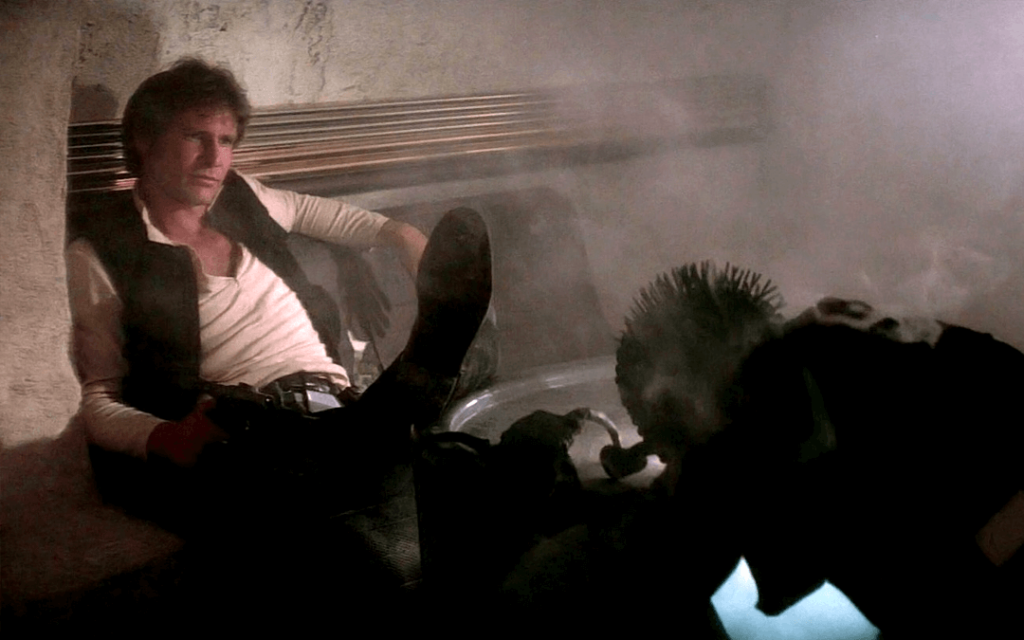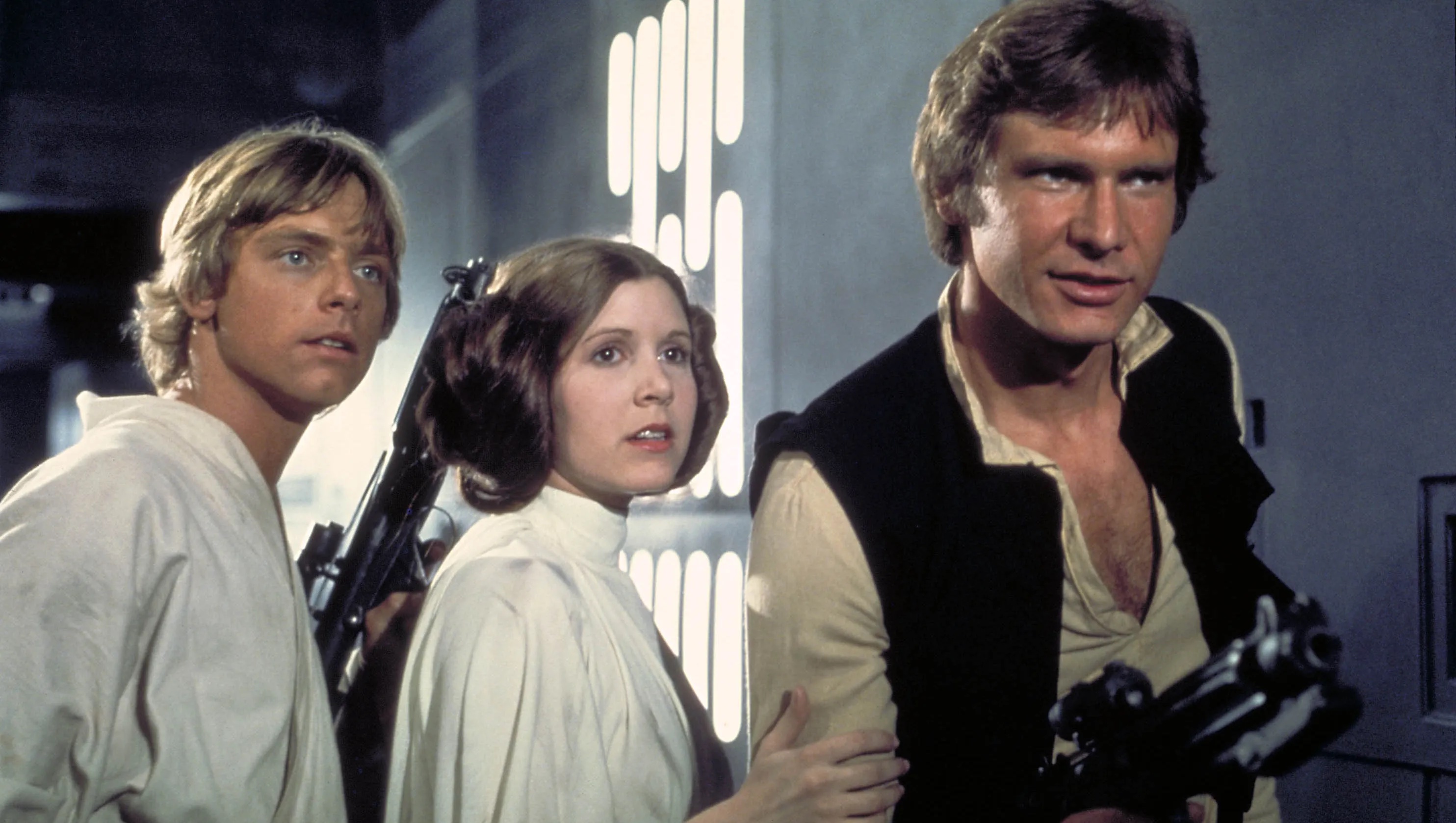All the Write Moves: "Solo: A Star Wars Story"
June 4, 2018
Most quick-take analyses of Solo: A Star Wars Story focus on the movie’s disappointing opening-weekend haul, with some pundits going so far as to say Solo is the first flop of the Star Wars franchise. When trying to understand how cinematic storytelling works, such myopic analyses create problems: Yes, some commercial disappointments are irredeemable, but many are the result of problematic films with admirable elements.
For Solo , this is the case. The film, which was written by Star Wars veteran Lawrence Kasdan and his son, Jon Kasdan, reminds us why the elder Kasdan has a place atop the Mount Rushmore of action-adventure screenwriters.Lest we forget, in addition to his work on various Star Wars pictures, Kasdan co-wrote Raiders of the Lost Ark. He excels at crafting brisk narratives, delightful revelations and dialogue.
And although it is not accurate to say that Kasdan gave Han Solo his voice — Star Wars creator George Lucas did that — it’s fair to say he helped perfect Solo’s personality.
Which is why it would be shocking if the new movie got Han Solo fundamentally wrong (it doesn’t).
Portrayed by Alden Ehrenreich, the young Solo whom viewers meet in the new movie aligns with memories of the character played by Harrison Ford from 1977 to 2015: Brave to the extreme of being reckless, altruistic despite efforts to be heartless and prone to braggadocio. That the Kasdans got all of this right is no small feat, especially since in its 135-minute running time, Solo also squeezes in a handful of subplots and new characters.
Still, some old-school fans might claim Solo didn’t get the main character right for a reason beyond writing: Ehrenreich is not Ford. (That is not to malign Ehrenreich’s performance, but to underscore a challenge for writers in today’s sequel/reboot climate).
Some roles are so intrinsically connected to a particular actor that any re-casting, no matter how effective, will negatively impact storytelling. Chances are some fans stayed away from Solo simply because they cannot accept anyone but Ford playing the character, which weakens any argument that the script was a major reason the film underperformed.
The Kasdans also faced an even greater challenge: Why tell the story of young Han Solo at all?
Lucas’ prequels (all of which were met with criticism) explore a question that genuinely interests those who are deeply curious about the Star Wars universe: How did Anakin Skywalker become Darth Vader? Mysteries that fans truly wanted to solve were baked into the first three Star Wars movies and setting aside the quality of the prequels, the reason for making them was sound.
The same cannot be said of Solo.
It gives nothing away to reveal that the new film explains how Solo met his future co-pilot, Chewbacca; how he won his spaceship, the Millennium Falcon, from interstellar rascal Lando Calrissian and how Solo piloted the Falcon through the Kessel Run in record time.
All of those concepts were introduced in Star Wars and The Empire Strikes Back.
So even though the Kasdans wrote a fun adventure involving friendship, romance and spectacle, Solo is ultimately pointless. Viewers learn a few new specifics, but they don’t gain new insights.
Consider the flashback scenes in The Godfather, Part II (1974). They take our knowledge of Vito Corleone way beyond what we learned about him in The Godfather (1972). Great prequel storytelling changes how we see familiar characters, instead of just reaffirming established perspectives.
Yet in other ways, Solo is respectable. The jokes are amusing, the action scenes are lively, new characters are vivid and the effort to imbue a familiar character with emotional backstory (no matter how predictable that backstory might seem) is commendable.
All of which raises questions.
Might extraordinary word of mouth have helped to surmount so-called Star Wars fatigue? If fans are predisposed to resist any actor who takes over a beloved role, can the best screenplay change that? If there’s no good reason for a movie to exist, can a great screenplay overcome that problem?
Intriguing as these questions are to ponder, they’re impossible to answer.
What we can say for sure is that Solo was never a surefire success. In some respects, the deck was stacked against the picture — but the general consensus is that Solo is mediocre. An argument could be made that the skill and wit the Kasdans brought helps explain why the results weren’t even worse.
The true test of the movie’s quality will require tracking how attitudes toward Solo change over time. Once people get over the fact that Solo isn’t everything it might have been, it will be educational to see how feelings resolve around what the movie actually is. And if at some future date popular opinion begins to swing in the movie’s favor, the Kasdans’ craftsmanship might be the reason why.
Consider the most important moment in Solo, which returns our understanding of the title character to the first impression we formed when he faced off against Greedo in that dingy cantina on Tatooine. Solo shot first. It is not accidental that a scene of Solo shooting first provides the emotional climax of Solo: A Star Wars Story. In essence, the Kasdans reset Han Solo, righting a narrative wrong that Lucas committed by altering the Greedo scene for re-releases in order to make Solo seem like the injured party.
If Solo sequels happen, everything in them will emanate from one crucial writing decision: The Solo we’ll see going forward is the scoundrel whom audiences have known and loved since 1977, not the neutered copy who has infuriated old-school fans for decades.
Written by: Peter Hanson
Peter Hanson is a Los Angeles-based writer, filmmaker and teacher. He directed the screenwriting documentary Tales from the Script, and he teaches at Pepperdine University and UCLA Extension. He provides script consulting at www.GrandRiverFilms.com.



